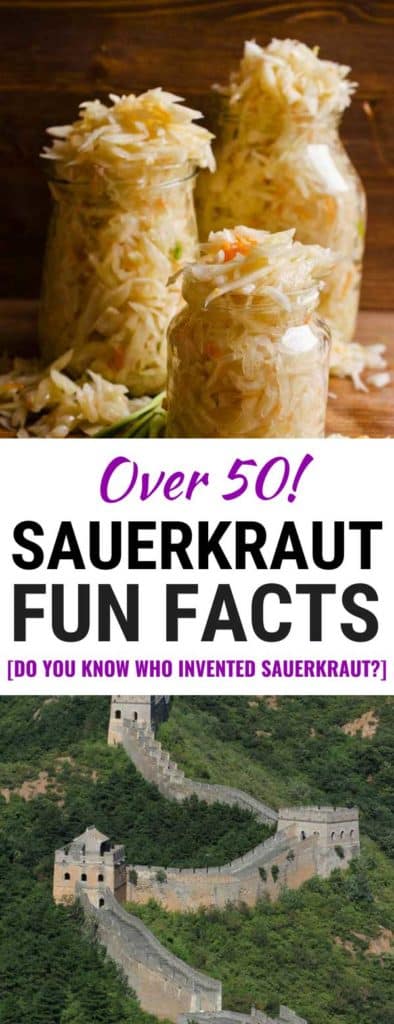Sauerkraut is a German word, so we all assume the Germans invented sauerkraut. Is that true?
What is the key topping on a New York style hot dog?
How much did the largest cabbage ever grown weigh?
What should you eat on New Year’s Day to ensure goodness and wealth in the new year?
What benefits are incurred when cabbage is fermented?
Read on for answers to these questions and to discover over fifty nifty sauerkraut fun facts.
What’s in a Name?

1. The word “sauerkraut” is from German Sauerkraut which literally means “sour cabbage.” From sauer “sour” + kraut “vegetable, cabbage.”
2. The word sauerkraut was first mentioned in the American English Dictionary in 1776.
3. During World War I, due to concerns that the American public would reject a product with a German name, American sauerkraut makers relabeled their product “Liberty Cabbage.”
What is Sauerkraut?
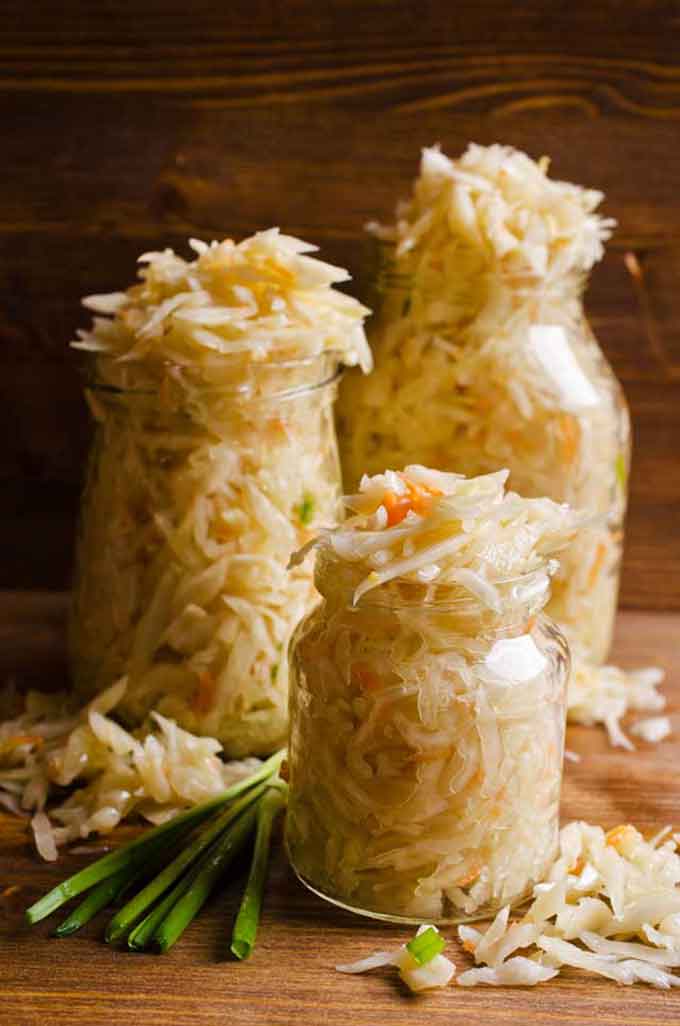
4. Sauerkraut is finely cut cabbage that has been fermented by various lactic acid bacteria. Properly stored, it has a long shelf life and a distinctive sour flavor, both of which result from the lactic acid that forms when the bacteria ferment the sugars in the cabbage.
5. In Korea, their well known national dish similar to sauerkraut is kimchi which is made with Napa cabbage, radishes, and green onions mixed with a spicy paste of garlic, ginger, fish sauce, rice flour and Korean red pepper powder.
Learn how to make sauerkraut here.
Learn how to make Kimchi here.
What are Some Benefits from Eating Sauerkraut?
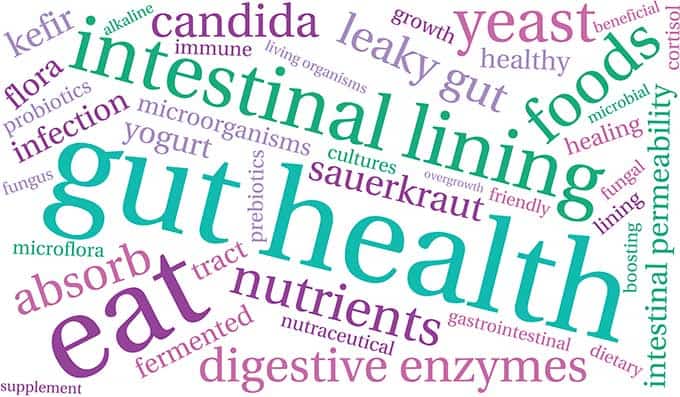
6. Sauerkraut contains live and active probiotics that act like your first line of defense against various harmful bacteria or toxins that might enter your body.
7. Sauerkraut is high in digestive enzymes that help to break down starches, proteins, and fats.
8. Sauerkraut has high levels of Vitamin C, for collagen production and as a natural antioxidant for immune system support.
9. Sauerkraut contains Vitamin K2, one of the most important nutrients for long-term bone health due to its ability to assist calcium and other minerals to bind into the bone matrix to strengthen bones.
10. Sauerkraut is rich in fiber for bowel health, lowering blood cholesterol and controlling blood sugar levels.
11. Sauerkraut contains adequate amounts of the minerals potassium, iron and magnesium. Potassium helps control heart rate and blood pressure. Iron is required for red blood cell formation and muscle building.
12. Sauerkraut is high in the antioxidants lutein and zeaxanthin, both associated with preserving ocular health.
13. Sauerkraut is a time-honored folk remedy for canker sores. It is used by rinsing the mouth with sauerkraut juice for about 30 seconds several times a day, or by placing a wad of sauerkraut against the affected area for a minute or so before chewing and swallowing the kraut.
14. The heat processing of canned sauerkraut destroys live probiotics and viable digestive enzymes.
More about the nutritional benefits of sauerkraut here.
Discover many ways in which to enjoy sauerkraut here.
Which Country Invented Sauerkraut?

15. The Germans gave sauerkraut its popular name but the Germans did not invent sauerkraut.
16. Sauerkraut originated nearly 2,000 years ago in ancient China. In summer, slaves building the Great Wall of China lived on cabbage and rice. In winter, the cabbage was preserved with rice wine which soured the cabbage to keep thousands of laborers healthy in the worst of conditions.
17. The Tartars brought sauerkraut to Europe, where the recipe was improved upon. Rather than packing cabbage with rice wine, the Europeans packed the sliced cabbage in salt to give bacteria present on the cabbage the ability to convert the natural sugars into lactic acid, thus creating what we know today as sauerkraut.
18. In the 18th century, explorers like Captain Cook used sauerkraut to prevent scurvy during long sea voyages, bringing as much as 25,000 pounds of the Vitamin-C rich ferment along on voyages.
19. When General Lee took possession of Chambersburg, on his way to Gettysburg, among the first things he demanded for his army was twenty-five barrels of “Saur-Kraut.”
20. During the American Civil War, the physician John Jay Terrell was able to successfully reduce the death rate from smallpox among prisoners of war from 90 percent to only 5 percent. He attributed this to feeding his patients raw sauerkraut.
21. During the great migration to the New World, German and Central European immigrants brought sauerkraut to the US, mainly to Pennsylvania and Ohio, where they became known as the Pennsylvania Dutch.
22. In order for the German immigrants who landed in New York City in the 1860’s to make a living, they began selling their sauerkraut with sausage and milk rolls from pushcarts in the Bowery section. Eventually, the bun and sausage combination became a treat commonly known as hot dogs. To this day, a New York style hot dog is served with sauerkraut.
23. In 1905, several small great lakes-area sauerkraut manufacturers formed the Freemont Kraut Company. After they acquired the Frank’s Pure Food Company in 1933, Frank’s Kraut was born and is acclaimed to be the best tasting, most authentic sauerkraut made in the US today. It is still handmade in small batches using the same oak casks that date back to the turn of the century. It is heat-pasteurized, however, and would be lacking in probiotics and enzymes.
24. In WWI and WWII, the slang word “kraut” was used to refer to sailors and ultimately all German soldiers because of the long history of German ships being outfitted with sauerkraut as part of daily food rations to prevent scurvy.
25. The British also took sauerkraut on their voyages, but later as they switched to limes, they became known as “limeys.”
How Much Sauerkraut Do We Eat?
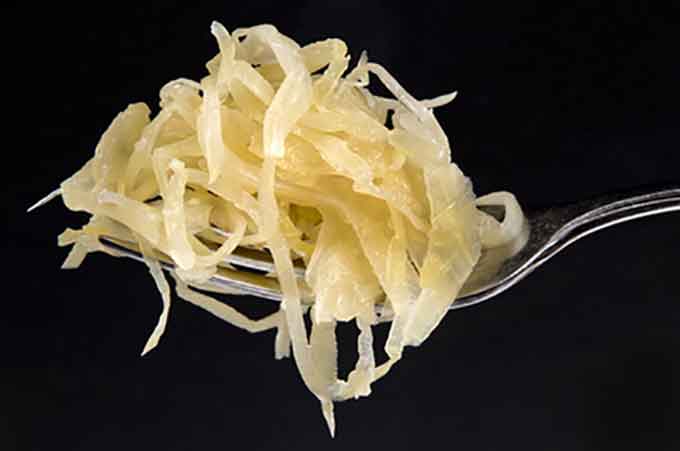
26. Americans consume 387 million pounds of sauerkraut annually or 1.5 pounds per person per year.
27. In Germany, the average per capita consumption of sauerkraut is approximately 2.6 pounds, down from 4.4 pounds 40 years ago.
28. In France, the average per capita consumption is approximately 3.75 pounds of sauerkraut.
29. In Korea, they consume a whopping 49 pounds per person of kimchi!
30. Excessive consumption of sauerkraut may lead to bloating and flatulence due to raffinose, a trisaccharide – composed of galactose, glucose, and fructose – which the human small intestine cannot break down.
More on how much sauerkraut to eat here.
The Ancient Roots of Cabbage
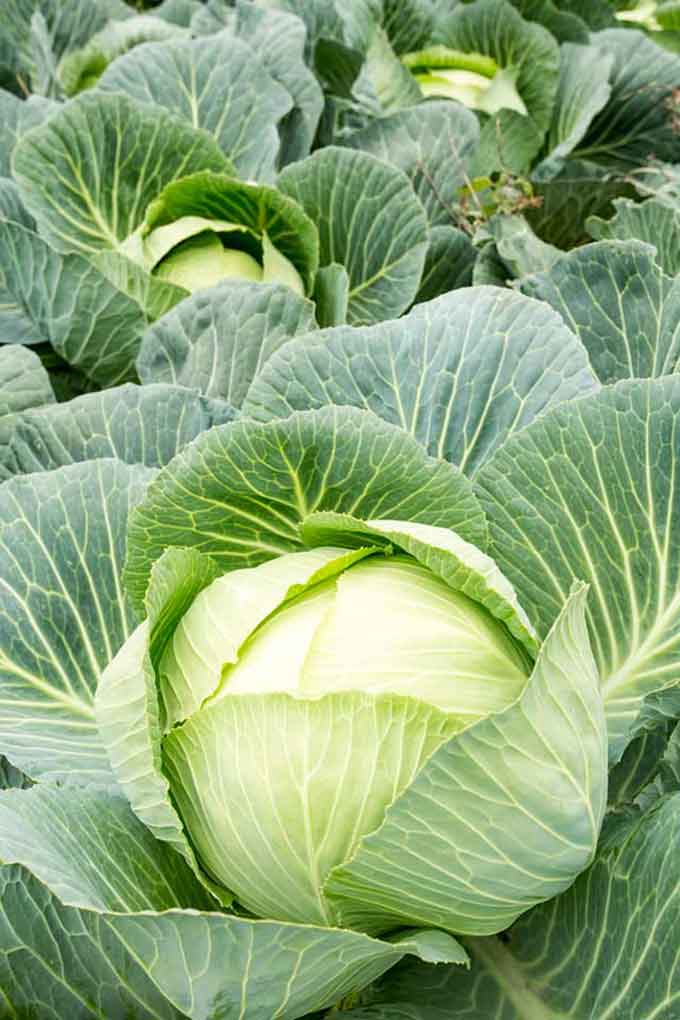
31. The word “cabbage” comes from the French word “caboche,” an everyday word for “head.”
32. Cabbage has been cultivated for longer than almost any other vegetable on record. It originated in Shensi Province, China, sometime around 4,000 B.C.
33. Cabbage is a cruciferous vegetable belonging to the mustard family, Brassicaceae. You’ll also find kohlrabi, kale, broccoli, brussel sprouts, and cauliflower in this family.
34. There are at least 100 different types of cabbage grown throughout the world. However, the best sauerkraut is made from heirloom varieties such as Late Flat Dutch, Brunswick, Golden Acre, Glory of Enkhuizen.
35. Cabbage is considered a cool-weather crop. Most production of cabbage occurs in the fall, winter and spring months in the southern states and extending into the summer in the northern states.
36. The world’s largest cabbage grown is credited to Scott Robb of Palmer, Alaska, whose record-setting giant cabbage weighed in at 138.25 pounds at the Alaska State Fair in 2013. Robb credits the massive growth to long summer days. “Since it really doesn’t get dark during an Alaskan summer, the cabbage growth doesn’t really shut down, but continues to lumber along and grow.”
37. Although cabbage is grown throughout the United States, 78 percent of the nation’s total cabbage (fresh market and processing) is produced in five states: California, Wisconsin, New York, Florida, and Texas.
38. Total U.S. cabbage production in 2016 was estimated at 1,844.9 million pounds (USDA ERS, 2017).
39. The majority of cabbage is used in processing for coleslaw (45%), followed by fresh head cabbage (35%), sauerkraut (12% or 221 million pounds) and other fresh-cut products (5-10%).
40. The national average cabbage yield in 2016 was estimated at 39,600 pounds per acre.
41. The per person annual consumption of fresh cabbage in 2016 averaged 5.8 pounds per person and 1.3 pounds of canned (kraut) (USDA ERS, 2017).
42. Because cabbage requires only three months of growing time, one acre of cabbage will yield more edible vegetables than any other plant. This makes cabbage a money saving food!
Celebrating this Humble Vegetable
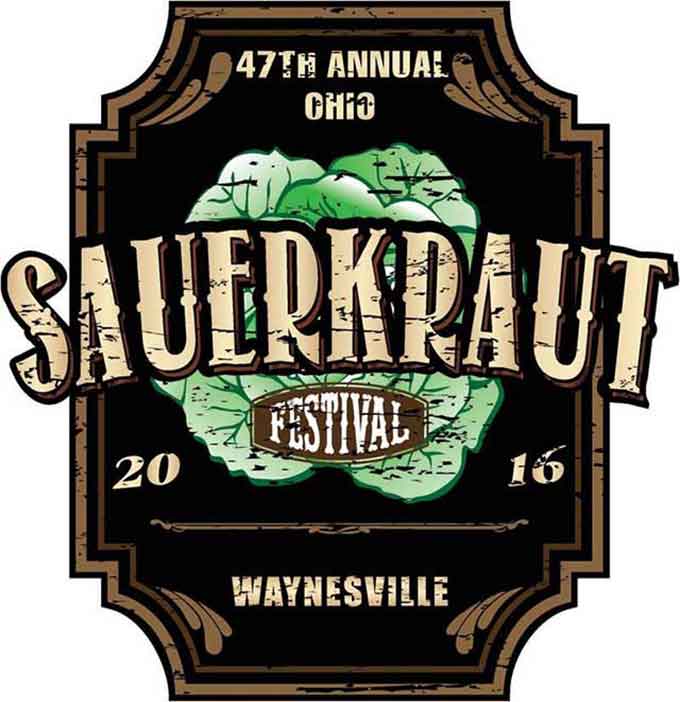
43. World Cabbage Day is February 17th, a day when the pleasure and simplicity of the cabbage is celebrated.
44. As the Waynesville Retail Merchants were planning to hold a sidewalk sale, it was suggested that a sauerkraut dinner be served as part of the event. With this decision, the Ohio Sauerkraut Festival was born. That fall, on October 3, 1970, Waynesville hosted its first Sauerkraut Festival, serving 528 pounds of sauerkraut to approximately 1500 visitors. Today, the Ohio Sauerkraut Festival serves 7 tons of sauerkraut and attracts approximately 350,000 visitors each year.
45. Eating pork and sauerkraut on New Year’s Day is a long-standing tradition both in Germany and Pennsylvania to “ensure as much goodness and wealth in the new year as the number of shreds of cabbage in the pot of sauerkraut.” This was a German custom brought over by the Pennsylvania Dutch who settled largely in the central portions of Pennsylvania.
From Salty Cabbage to Tangy Sauerkraut
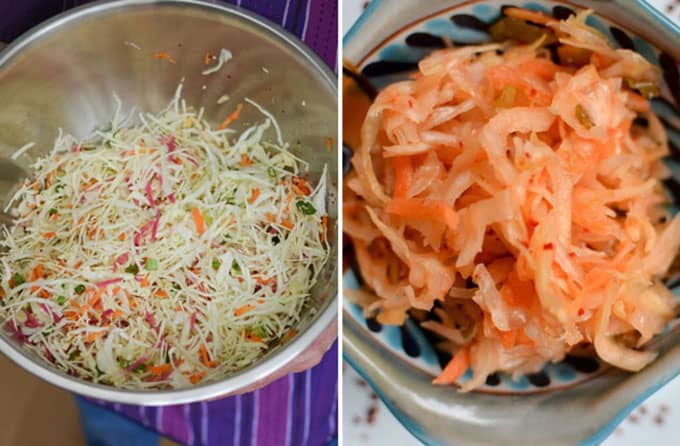
46. Sauerkraut is made by a process called lacto fermentation by which lactic-acid bacteria convert sugars in cabbage into lactic acid. The lactic acid gives sauerkraut its “tang” and naturally preserves it.
47. Ideally, sauerkraut is made from cabbage harvested in the fall with fermentation taking place during the winter months.
48. Fermenting cabbage increases its nutritional benefits, making it more digestible and creating probiotics for improved digestion.
More on the transformation of salty cabbage to tangy sauerkraut here.
And… Just a Few Cabbage Jokes
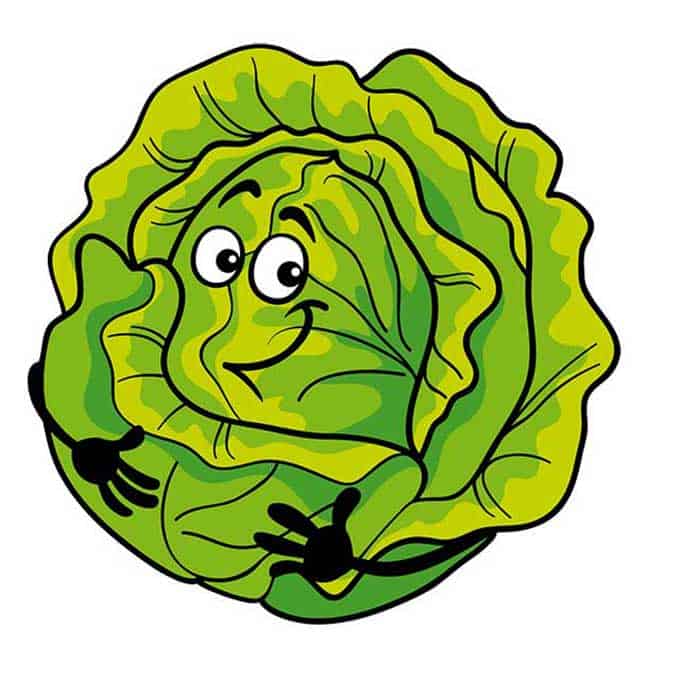
49. What is another name for brussels sprouts? Cabbage patch kids.
50. How does a farmer mend his pants? With Cabbage patches.
51. Why did the grocery store sell green and purple cabbage? Cause two heads are better than one.
References
https://www.agmrc.org/commodities-products/vegetables/cabbage
https://delishably.com/meat-dishes/Exploring-Sauerkraut
https://en.wikipedia.org/wiki/Sauerkraut
https://frankskraut.com/wp-content/uploads/…/How-We-Grow-Sauerkraut.pdf
https://germanfoods.org/german-food-facts/sauerkraut-superfood/
https://www.ilovepickles.org/pickle-facts/crazy-facts/sauerkraut-fact-sheet/
http://www.jokes4us.com/miscellaneousjokes/foodjokes/cabbagejokes.html
http://livininajar.blogspot.com/2010/03/sauerkraut-part-2-history.html
http://www.morsessauerkraut.com/history.html
https://www.npr.org/2012/09/04/160562400/alaska-man-rolls-record-cabbage-out-of-the-patch
http://sauerkrautfestival.waynesvilleohio.com/about/history-of-the-sauerkraut-festival-4/
http://thehumblegardener.com/facts-about-cabbage/
What sauerkraut fact were you most intrigued by? Do you have one to add to the list?

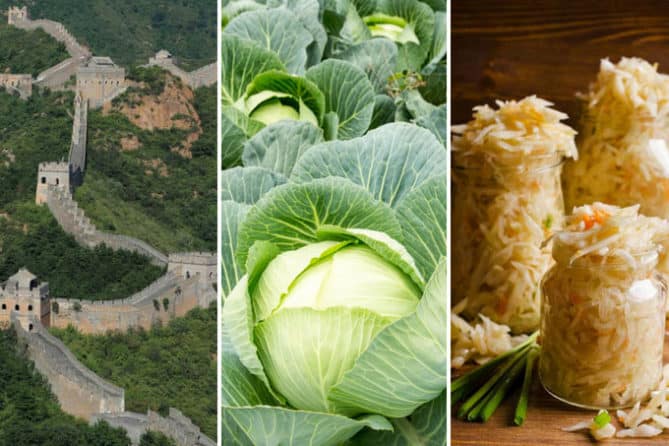

 This post may contain affiliate links which won’t change your price but will share some commission.
This post may contain affiliate links which won’t change your price but will share some commission.